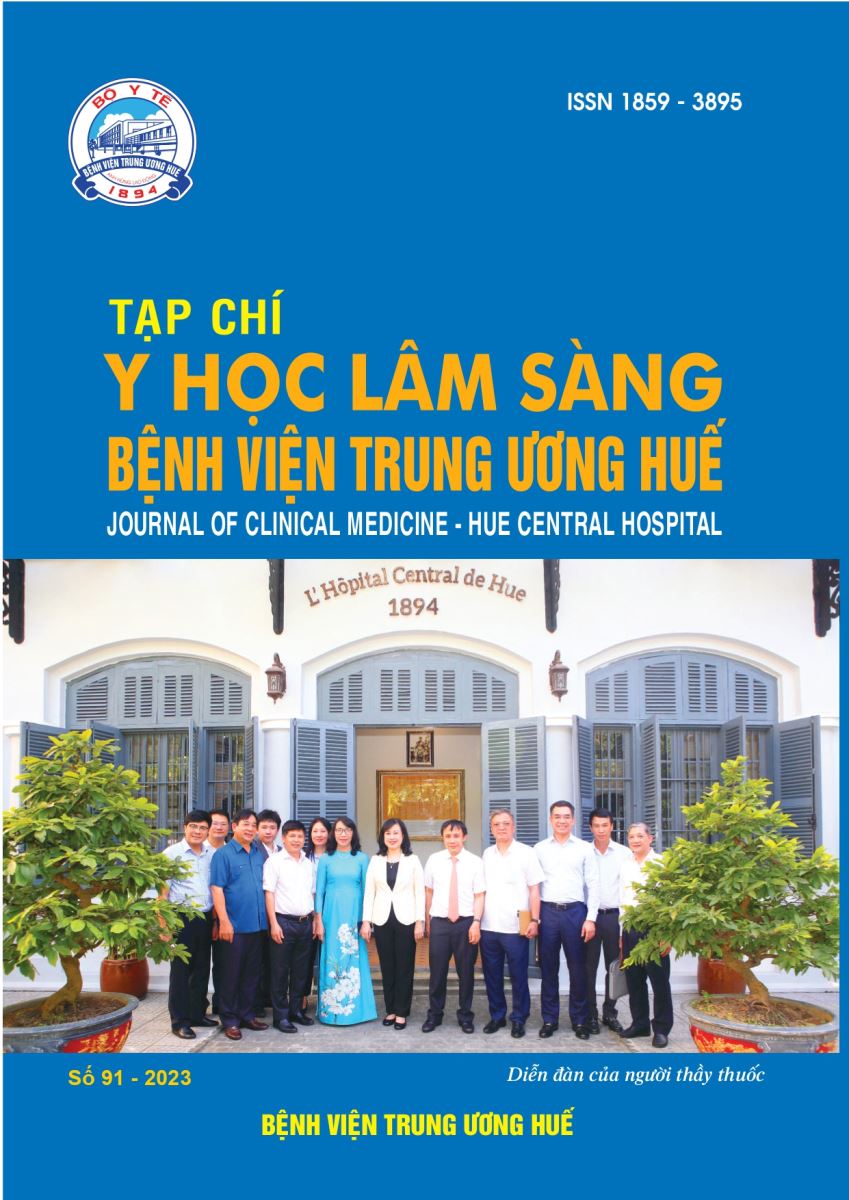Abstract
Background: Parotid tumors are abnormal growths of cells that form in the parotid glands. Most parotid tumors are benign, though some tumors can become cancerous. Rate of benign tumor is 80%, rate of tumor cancer is about 20%. Tests and procedures used to diagnose salivary gland tumor include: physical exam, imaging tests such as magnetic resonance imagining (MRI), collecting of a sample of tissue for testing (biopsy) such as fine - needle aspiration (NFA). Treatment for salivary gland tumors is usually with surgery to remove the tumor, salivary gland tumors cancers may need additional treatment such as with radiation therapy and chemotherapy.
Methods: A prospective study was carried out at oncology center in Hue Central Hopital from January of 2019 to July of 2022. We analyzed the clinical data from 20 patients with parotide tumor.
Results: In 40 cases, 36 cases had good result, 2 cases had midle result, 2 cases had bad result.
Conclusions: Diagnosis exactly and the best parotidectomy will have a good result, reduce the complications and avoiding the recurrence.
References
Young A, Okuyemi OT, Malignant Salivary Gland Tumors, in StatPearls. 2023: Treasure Island (FL) ineligible companies. Disclosure: Oluwafunmilola Okuyemi declares no relevant financial relationships with ineligible companies.
Hofmann E, Priebe J, Rieke DT, Doll C, Coordes A, Olze H, et al. Prognostic factors in surgically treated malignant salivary gland tumors. Oral Oncol. 2023; 144: 106484.
Namboodiripad PC. A review: Immunological markers for malignant salivary gland tumors. J Oral Biol Craniofac Res. 2014; 4(2): 127-34.
Hàn Thị Vân Anh. Nhận xét đặc điểm lâm sàng , mô bệnh học và kết quả phẫu thuật u tuyến nước bọt mang tai ở bệnh viện K từ năm 1996-2001, Luận văn tốt nghiệp thạc sĩ Y học chuyên ngành ung thư, trường đại học Y Hà Nội, Hà Nội. 2001.
Nguyễn Minh Phương. Chụp tuyến có thuốc cản quang đối chiếu giải phẫu bệnh trong chẩn đoán và điều trị u tuyến nướ c bọt mang tai, in Luận văn tốt nghiệp bác
sỹ nội trú chuyên ngành Răng Hàm Mặt, Đại Học Y Hà Nội. 2000.
Straub A, Linz C, Strobel S, Hartmann S, Hohm J, Fuchs A, et al. Mammary analogue secretory carcinoma of a salivary gland of the hard palate with contralateral cervical lymph node metastases: A case report. Mol Clin Oncol. 2021; 15(5): 226.
Ning C, Zhao T, Wang Z, Li D, Kou Y, Huang S. Cervical lymph node metastases in salivary gland adenoid cystic carcinoma: a systematic review and meta-analysis. Cancer Manag Res. 2018; 10: 1677-1685.
Wang X, Luo Y, Li M, Yan H, Sun M, Fan T. Management of salivary gland carcinomas - a review. Oncotarget. 2017; 8(3): 3946-3956.
Shabani S, Sharma AV, Carmichael ML, Padhya TA, Mifsud MJ. Management of Non-High-Risk Salivary Gland Carcinomas With Surgery Alone. Cureus. 2021; 13(8): e16970.
Romanello DA, Imamguliyeva Z, Cavalieri S, Vischioni B, Gandola L, Iannalfi A, et al. Multidisciplinary Management of Radiation-Induced Salivary Gland Carcinomas in the Modern Radiotherapy Era. Cancers (Basel). 2020; 12(12).
Huang Q, Hu W, Hu J, Gao J, Yang J, Qiu X, et al. Intensity-modulated proton and carbon-ion radiation therapy in the management of major salivary gland carcinomas. Ann Transl Med. 2022; 10(22): 1195.
| Published | 26-12-2024 | |
| Fulltext |
|
|
| Language |
|
|
| Issue | No. 91 (2023) | |
| Section | Original article | |
| DOI | 10.38103/jcmhch.91.10 | |
| Keywords | Tuyến nước bọt mang tai Parotidectomy, salivary grand tumor |

This work is licensed under a Creative Commons Attribution-NonCommercial-NoDerivatives 4.0 International License.
Copyright (c) 2023 Journal of Clinical Medicine Hue Central Hospital

